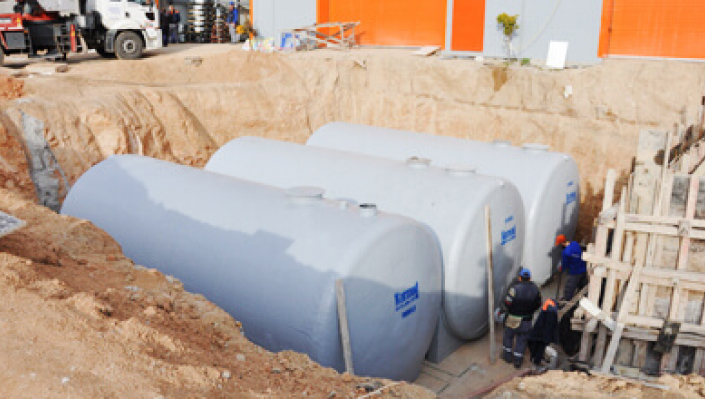Water tanks have become a ubiquitous sight in various applications, particularly in rainwater collection systems. The advancements in water tank production technology have enabled the use of raw materials that are safe for storing different contents. These raw materials, namely polyethylene, polyester, and stainless steel, were carefully selected through P&D studies before the tanks' production.
Rainwater collection systems have gained global significance in recent years due to their straightforward installation process. Rainwater from roofs is directed through PVC pipes to fill the eaves and eventually drain into a tank, establishing a rainwater harvesting system. For drinking purposes, the water in household systems must undergo filtration, making polyethylene tanks an affordable and suitable choice for home systems.

The dimensions of rainwater harvesting systems vary based on the region's rainfall rate and the required water volume. The diversity in tank designs allows for selecting tanks tailored to the specific location where they will be placed.
Importance of Rainwater Harvesting
As per scientific predictions, numerous metropolitan areas worldwide will face water shortages in the near future, including Istanbul. To address this concern, some cities have already adopted large-scale rain storage systems to postpone potential water problems. For instance, Sydney identified areas with abundant rainfall and installed rainwater harvesting stations featuring inverted umbrella-like structures housing tanks that supply water to the city.
Cape Town in South Africa serves as an example of a city already grappling with plastic water tank scarcity. Water conservation efforts in Japan have led to innovative solutions, such as reusing water. One ingenious approach involves collecting water used for washing hands in the cistern part of the toilet, then utilizing it to clean the toilet itself, thereby maximizing water efficiency.

Properties of Water Tank Raw Materials
Polyethylene Tanks:
• Most affordable price tag.
• Monoblock production without rivets or joints.
• Diverse design options.
• Suitable for food storage due to international food compatibility.
• Specific tanks for processes like pickling are available.
Polyester Tanks:
• Combined with glass fiber and polyester resin using special adhesives.
• Ideal for chemical storage, especially with isophthalic and epoxy-based vinylester resin.
• Large tonnage tanks can be produced.
• On-site assembly option.
Stainless Steel Tanks:
• Produced by combining chromium and nickel through argon welding based on tank design.
• Falls under the most robust tank category.
• Repaired using the raw material of stainless steel.
• Two-year guarantee against manufacturing defects.
• Available in a wide range of colors for easy content categorization.
In conclusion, we have discussed the importance of rainwater harvesting for the future of water conservation and understood the suitability of different water tank sizes for such systems. If you wish to set up a rainwater harvesting system and need water tanks, feel free to contact our customer representatives. We offer a variety of tanks to cater to your specific needs.


 EN
EN
 DE
DE
 FR
FR
 IT
IT
 ES
ES
 PT
PT
 RU
RU
 AR
AR
 BG
BG
 SR
SR
 GR
GR
 SQ
SQ
 RO
RO
 PL
PL
 HU
HU
 CZ
CZ
 HR
HR
 AZ
AZ
 GE
GE
 AM
AM
 IL
IL